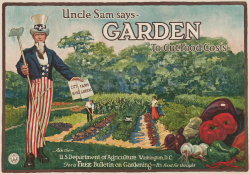Where to Draw the Line
“Organic” may be a simple choice for shoppers but can be a bureaucratic nightmare for farmers.
Becoming a certified organic farm takes years of time and mountains of record keeping. Fortunately, backyard gardeners can use environmentally friendly practices in their own gardens to produce healthier meals.
There are chemical free alternatives to pest control and fertilizing. You can avoid chemical insecticides by using soaps, and oils that either repel or exterminate garden pests. Gardeners can also purchase ladybugs or praying mantis eggs at local garden stores to control aphids, beetles, moths and fruit flies.
Plants such as marigolds and garlic repel garden pests. When planted close to crops, they keep bugs away. Diatomaceous earth has an abrasive feel and bugs don’t like to walk across it.
Jack Wilbur of the Utah Department of Agriculture says, “Look at what results you want and what you’re trying to control.” Once identified, choose products that will do the job.
Fertilizing without chemicals is even easier. Good compost is the best fertilizer. Manure is also great, but can get too hot. It is best spread on gardens in the fall or mixed with compost, peat moss and topsoil in the spring.
Young plants love nitrogen; it helps them grow. When they get bigger more phosphorous helps plants bear fruit. Blood meal is high in nitrogen and good for early spring. Use phosphorous-rich bone meal later in the growing season.
Wilbur says, “Going natural can take more time, and gardeners have to be more meticulous. More labor is involved in natural farming.” More labor, but it’s a labor of love.






